Marathon Man Anthony Chan
Anthony Chan is a master of 3-hour marathon pacing but that is not all the San Diego resident has got on his race resume, he is an accomplished triathlete too. He has qualified for the IRONMAN World Championships in Kona twice, and also raced in St. George in 2022 and he is currently preparing for another Kona qualification. However since 2015 he has been a pacer for the New York City Marathon starting with the 3:25 pace group and moving to the 3:00 pace group in 2018. His personal best marathon is a 2:38. Chan grew up in New York City but escaped the hustle and bustle of the Big Apple in 2017 to live life and enjoy the benefits of the warmer Southern California.
We had a few words with him about work, racing, training and fun.
ST: Thank you for your time Anthony.
Anthony Chan: It’s an absolute pleasure, Herbert. I have been reading your articles since discovering triathlon and Slowtwitch.com in the early 2010’s, so you can imagine my excitement when you reached out!
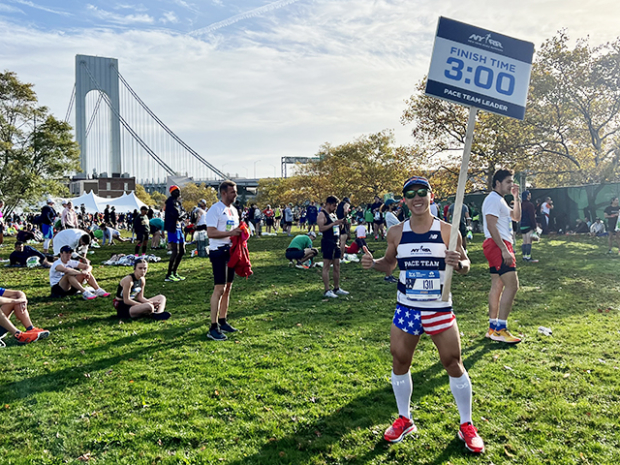
ST: You are too kind. What are you currently getting ready for? But I don’t just mean races, however that is of course acceptable too.
Anthony: This is an excellent question, but since this is ST, I feel like the most appropriate answer would be my 2023 lineup of triathlon races. Since we are nearly through December, the remainder of the year will be unstructured and focused on spending more time with family and friends. My first triathlon race of 2023 will be Ironman 70.3 Oceanside, followed by 70.3 Hawaii, Ironman Lake Placid, and then the 70.3 World Championship in Lahti. After that, all racing will take a backseat, as my fiancé and I will be celebrating our wedding December.
ST: Congrats to both of you, but honeymoon where?
Anthony: This is a work in progress, and we are narrowing down our top choices. If I had to put money on it, the honeymoon will take us to multiple parts of Asia/Southeast Asia.
ST: Tell us about your athletic background.
Anthony: I spent the majority of my youth trying all different sports, but the one that stuck for a while was tennis. I played in high school and college, and competed in a few local tournaments, but mainly, it was just a lot of rallying with friends. In the early 2010’s, I felt that I needed more endurance for tennis, so I took up running. That move snowballed into joining a local competitive running team in New York City, called the Dashing Whippets. Fun fact…It was on this team in 2011, where I briefly met Sarah Piampiano before she ran a blistering fast time at Brooklyn Half Marathon, and for me, breaking 1:30 for the first time.
Fast forward to 2012, I joined Team REFUEL, which was later rebranded as Team Chocolate Milk, and raced my first 140.6 at Ironman Lake Placid. The mass swim start was still in effect, and it was exhilarating racing with thousands of athletes. Simply put, I was hooked on triathlon, and permanently hung up my tennis racquets. Since then, I have spent the majority of the last 10 years racing triathlon, including 3 Ironman World Championships (2014 & 2016 Kona, 2022 St. George). Some of my favorite memories are from training sessions with friends, which is the primary reason why I keep training and racing.
ST: Recently you ran the California International Marathon, and it looked like you had fun.
Anthony: Ah yes, CIM! This was my third time running the event and my three fastest marathon PR’s were all executed at CIM, from 2:38 last year, 2:42 in 2019, and the most recent 2:48. This race is a no-brainer because the trip to Sacramento is a good excuse to visit my future in-laws, and spend quality time with family and friends. CIM had over 8 thousand finishers this year, which was a record for the event, as it continues to grow annually.
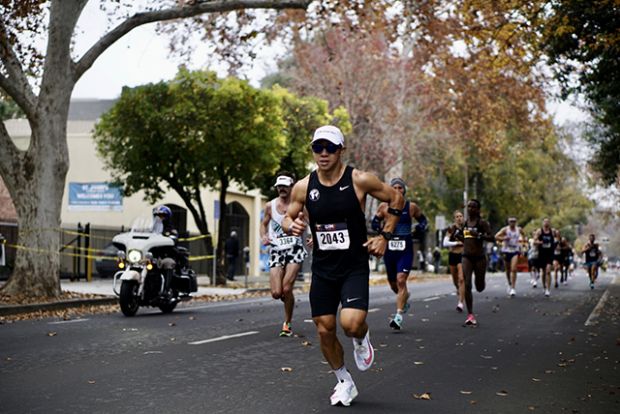
ST: Born and raised in New York City you now live in Southern California. When and why the move?
Anthony: That’s right – I am New York City born and raised and spent the first 27 years of life navigating the concrete jungle and living the daily grind. After spending hundreds of hours NYC Subway surfing, I traded it in for actual surfing, and moved to San Diego in December 2017. The reality was that I was starting to feel the burnout from “Live to Work” and wanted to flip the narrative to “Work to Live”. It has been a half a decade since moving to San Diego, and I have not once considered moving back to the City that Never Sleeps, primarily attributed to the multitude of amazing people, close-knit friends, and meeting my future wife! Although you can take the boy out of the city, you can’t take the city out of the boy. Inherently, I still grind and try to make the most of each day, like I did in NYC, but with a few tweaks to ensure long-term sustainability.
ST: Tell us about your day job.
Anthony: I am a career auditor, and my title is Senior Global Internal Auditor at Topgolf Callaway Brands (TC Brands), formerly known as Callaway Golf Company. TB Brands includes companies such as Callaway Golf, Topgolf, TravisMathew, OGIO, and Jack Wolfskin, which provides a suite of synergies between brands. The Global Internal Audit department is involved in all aspects of the company, as we provide a risk-based approach to provide assurance over the operating effectiveness of our company’s key processes, internal controls, and corporate governance. Our internal audit team is lean, but we are trained to add value through providing an independent and objective evaluations of financial and operational business activities. Ultimately, I spend the majority of my time in front of my computer or in collaborative meetings.
ST: You have been pacer in the NYC Marathon for quite some time now. How did that start?
Anthony: Before pacing the NYC Marathon, I had paced a few other local tri-state area (NY, NJ, CT) races, such as the New Jersey Marathon and Brooklyn Half. In 2015, with a good track record of pacing other events, I was invited to pace the NYC Marathon, 3:25 finish group. Shoutout to Steven Mura, Manager of Runner Training and Education at NYRR, for the opportunity to do it every year since! That year, I finished in 3:24:43, which was within our finish range of 3:24:30 to 3:25:00. The following year, I graduated to the 3:10 group. Then in 2017, I moved up to 3:05. From 2018 onward, I have been the 3-hour finish pacer, which is one of the key highlights of each year, mainly because I get to give back to the international running community by guiding runners from start to finish. The best feeling is when days and weeks after the marathon, and you get an email, direct message, or Strava comment, from a fellow runner who reaches out to say that they hit their goal time because of the pace team.
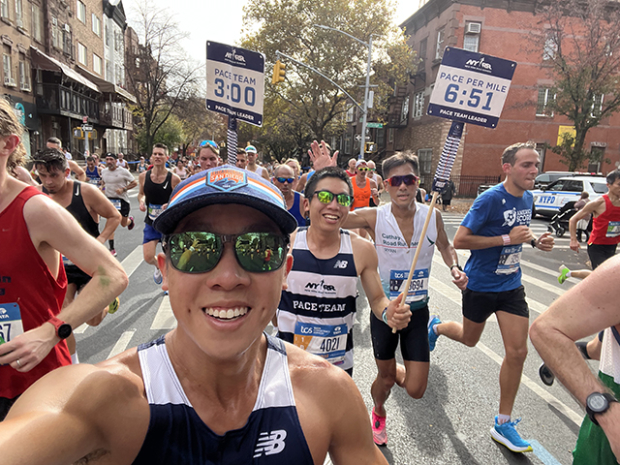
ST: As a pacer what has been the biggest group you have led?
Anthony: Since 2018, I have earned my spot at the 3-hour mark, but I started at the 3:30’s and worked my way up. The largest groups are definitely largest at major marathons, where I would say that our group balloons up to the hundreds. Law of diminishing returns always comes into play at the latter stages of the marathon, and our large group normally dwindles to a handful of athletes by the time we reach the finishing line. becomes much smaller.
ST: What is the closest you have arrived in terms of finish time closest to that 3-hour mark?
Anthony: As far as pacing goes, and specifically to the TCS New York City Marathon, the 3-hour group aims for 30 seconds under, so the goal is to cross the finishing line with a net time of 2:59:30. We are also instructed to run an even effort, which allows for a small variance of goal pace versus actual pace. In the 2022 edition of the NYC Marathon, I had a net time of 2:59:31, so I missed the goal time by 1-second. To help me rationalize an almost perfect execution, I like to point out that my co-pacer, Justin Wood, ran a net time of 2:59:29, so if you average out our times, you’ll arrive at 2:59:30! Our goal is consistency, so if you do a historical lookback, you will find that Justin and I have been pacing together since 2018, with finish times within 10 seconds of our goal.
2022 2:59:31
2021 2:59:26
2019 2:59:31
2018 2:59:21
ST: But you aren’t just a runner. Tell us about your triathlon exploits.
Anthony: That is true indeed. Like I mentioned earlier, I was hooked on triathlon quickly after I started running. Triathlon has been an important part of my life (and lifestyle) for the past decade. I have been fortunate to have raced in cool places like Zell Am See, Austria, and Lake Placid, New York.
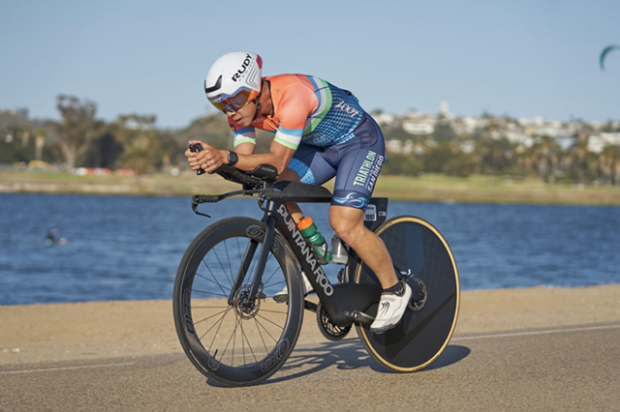
ST: How many times to Kona?
Anthony: Two and shooting for a third! I first raced Kona in 2014, and then came back in 2016, both of which were long days. In 2021, I qualified for Kona, but since that race was canceled, I ended up deferring to 2022 St. George World Championship. I have some unfinished business and would like to race Kona for a third time – let’s hope 2024 is the year with the recent announcement of the 2023 Men’s race taking place in another location.
ST: How do you feel about that split?
Anthony: This may come off as blunt, but it doesn’t really matter how I feel about the split in location. I do think it will provide the female athletes an immense platform as they get first dibs at Kona 2023. If 2022 IMWC – Day 1 was an appetizer, 2023 IMWC with women only will be exponentially more exciting. Ultimately, IRONMAN is a business and they (the board, senior leadership, and WC team) are the ones that have the ability to drive the ship as they see fit. I am not one to complain and knowing that change is the only constant, I’m actually very excited to see it unfold and be part of the new format.
ST: Talk about your race bike and how it is set up?
Anthony: The race bike is a Quintana Roo V-PR, which is set up with a SRAM AXS Red 12-speed drivetrain, HED Vanquish wheels, ISM saddle, and Look Keo pedals. I have been fortunate to be one of QR’s ambassadors, which has given me a direct line of feedback with the folks at American Bicycle Group. I have been riding the V-PR since the latter half of 2021 and it is an absolute joy to ride – it’s lightweight, aero, responsive, and simple to travel with. The setup of the bike doesn’t change often, since I prefer to set and forget, and focus on riding. On race day, the frame bottle cages are removed for the aero gains, a between the arms bottle is installed, along with a rear disc wheel if allowed.
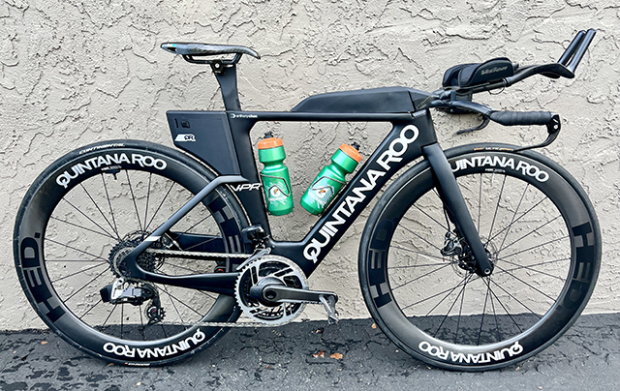
ST: How much of your training is done outdoors versus indoors, and has that changed much since moving to California?
Anthony: I think I may receive some envious responses when I say that 100% of my training is done outdoors. But that reality is, that was one of the major reasons for my move from NYC to San Diego. I enjoy riding my bike in any condition, and although I am aware than indoor training is more effective for time crunched and specific interval workouts, there is nothing that parallels the feeling of riding outdoors. In NYC, my riding was split approximately 50% indoors and 50% outdoors, but given the temperate climate in southern California, I opt for outside. So whether I am commuting to the office, running errands, executing interval workouts, or a chatty coffee spin, you’ll find me outside!
ST: Is there anything else we should know?
Anthony: Yes! Shameless plug, but this is for the Triathlon Club of San Diego (TCSD). I am currently on the board of directors for TCSD, and we support our community by providing support for athletes of all abilities, frequent social events, races and training groups. So if you are ever in the San Diego area, be sure to reach out to me or find a TCSD member. And if you stay long enough, you won’t want to leave.



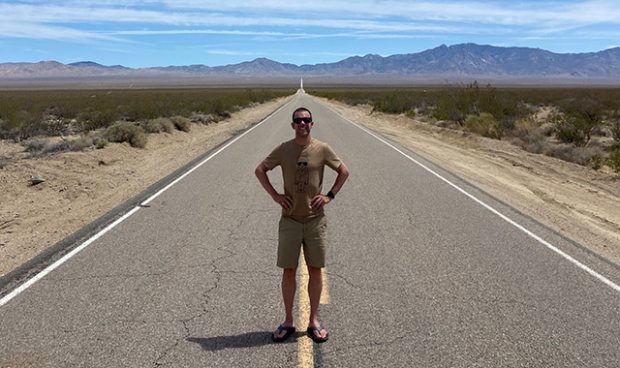
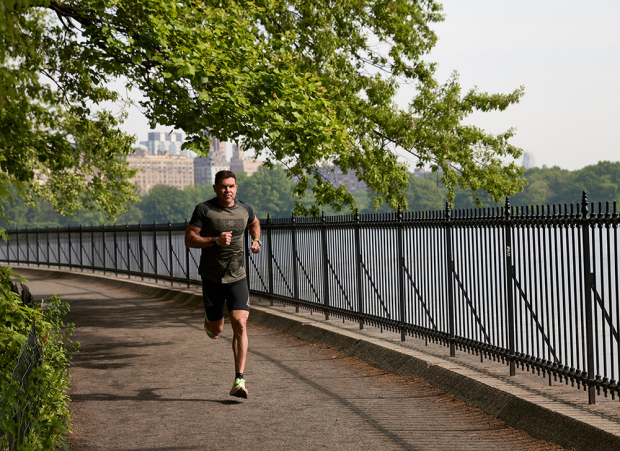
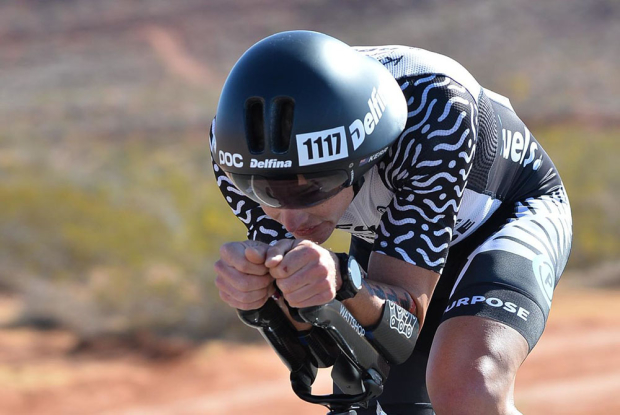

Start the discussion at forum.slowtwitch.com